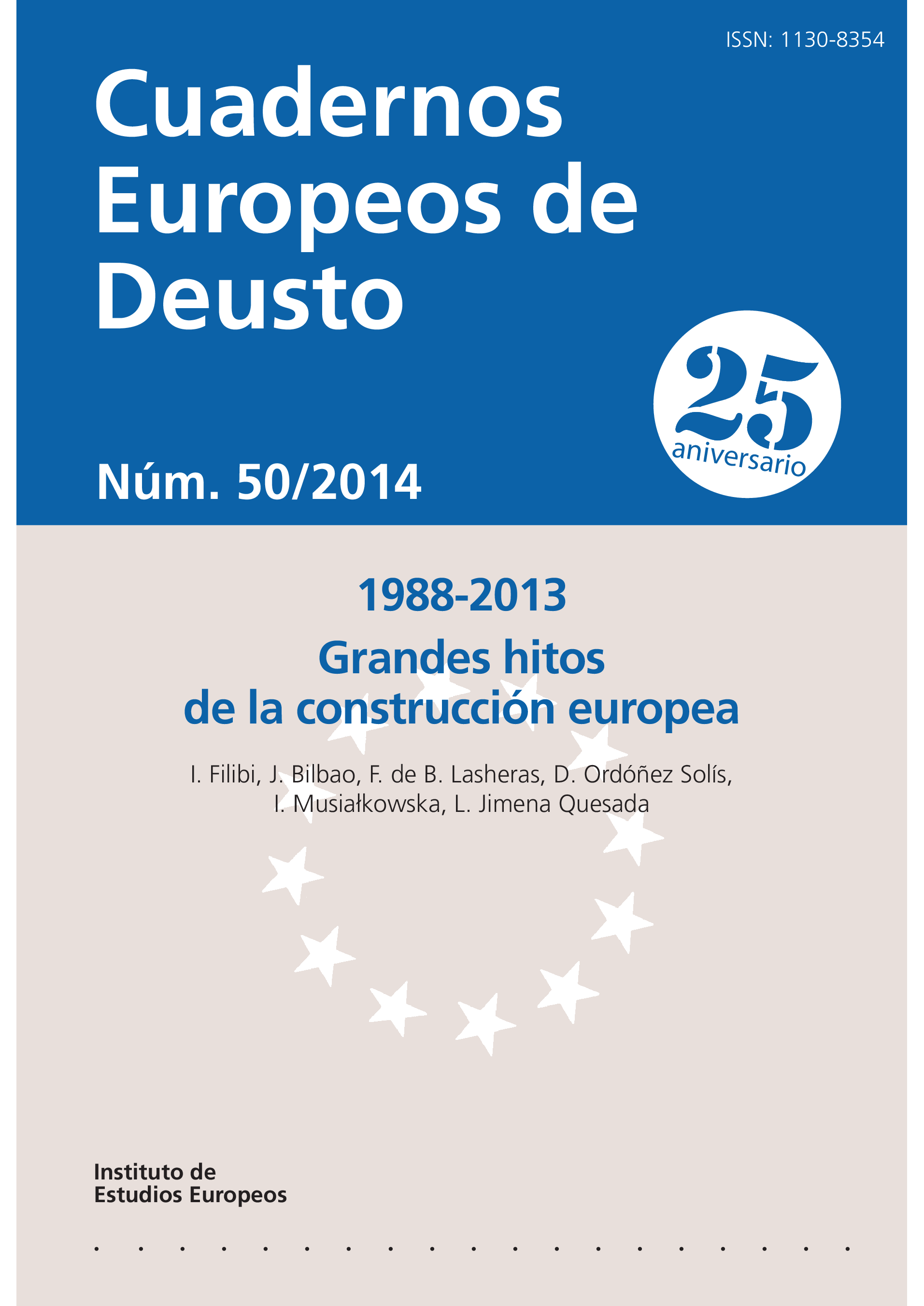La configuración del Espacio Judicial Europeo
Abstract
The European judicial area has been built on the European Communities insofar as the preliminary ruling procedure between National judges and the European Court of Justice (ECJ) was in force. However, since 1999 an area of freedom, security and justice has been established by the Treaty of Amsterdam, and in this framework the civil and criminal judicial cooperation was set up. The Treaty of Lisbon ended the distinction between community and intergovernmental pillars in the European Union (EU). The European judicial area has been developed through legislations transforming traditional conflict of law treaties into community or EU regulations; establishing new cooperation procedures in criminal or civil matters (arrest warrant and protection measure en civil matters); harmonising procedures (European order for payment procedure and orders freezing property or evidence) and approximating national legislations (mediation procedure in civil matters and the right to interpretation and translation in criminal proceedings). Meanwhile the ECJ has softened the pillars architecture and has remarked that the principles of confidence and mutual recognition are the cornerstone of the judicial cooperation in civil and criminal matters. Moreover, the ECJ is the guarantee of a high European standard regarding fundamental rights protection according to the EU Charter and case-law established by the European Court of Human Rights.
Received: 02 December 2013
Accepted: 20 December 2013
Published online: 15 April 2016
Downloads
The author grants to the Publisher the distribution, public communication, and reproduction rights of her/his work subject of publication in Deusto Journal of European Studies (DJES), whichever the media may be, including the permission to include it in the databases where this Journal is indexed and in the institutional repository of the Universidad de Deusto.
Upon its publication, the content of any Issue of Deusto Journal of European Studies (DJES) can be accessed, read, downloaded, copies, and distributed freely for non-commercial purposes and in accordance with any applicable copyright legislation.
The content of Deusto Journal of European Studies (DJES) can be subsequently published in other media or journals, as long as the author clearly indicates in the first footnote that the work was published in Deusto Journal of European Studies (DJES) for the first time, indicating the Issue number, year, pages, and DOI (if applicable). Any other use of its content in any medium or format, now known or developed in the future, requires prior written permission of the copyright holder.
The content of the work published in Deusto Journal of European Studies (DJES) is each author's sole responsibility. The authors assume the responsibility of obtaining all the necessary licenses for the reproduction in their manuscripts of any text, material or illustration coming from another author, institution or publication. The liabilities that may arise from complaints for publishing plagiarised articles are the sole responsibility of the author.


3.jpg)
2.jpg)
2.jpg)
2.jpg)
2.jpg)
2.jpg)







